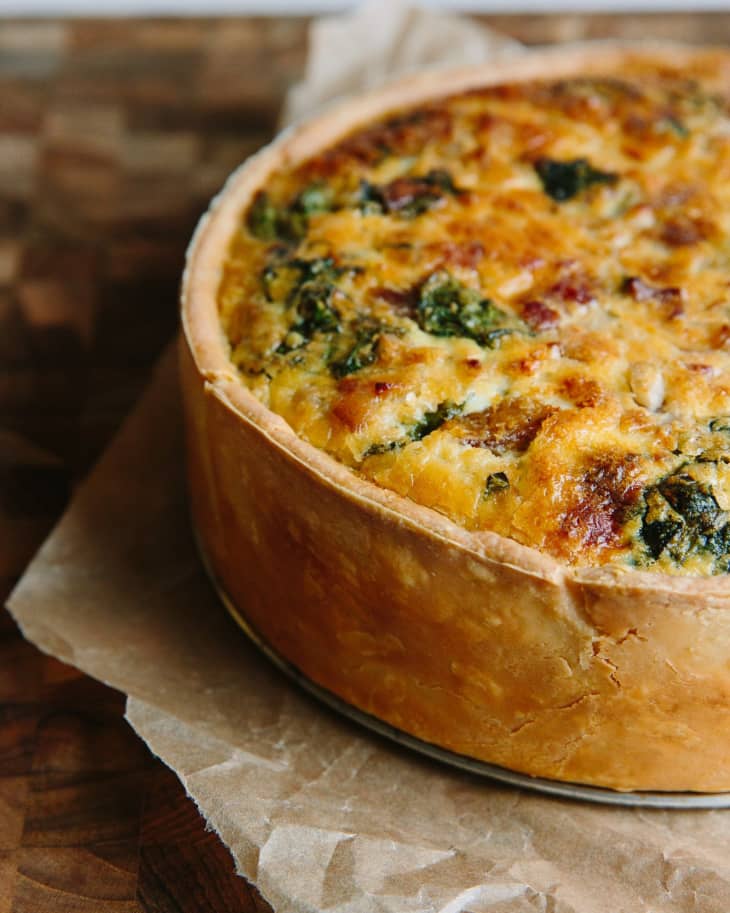5 Mistakes to Avoid When Making Quiche
Quiche fits the bill any time of day, be it breakfast, brunch, lunch, or dinner. You can make it rich and decadent, with the butteriest crust and heaps of cheese, or you can lighten it up and pack it with flavorful veggies. Whichever way you choose, it’s a guaranteed hit. That is, as long as you avoid a few common quiche-making mistakes.
Baking a quiche is really quite simple. In its most basic form, it’s a custard of eggs and milk baked in a pie crust. But for some reason, making one can sometimes trip people up and the results aren’t the smooth, creamy quiche in the buttery, flaky crust that was hoped for. Here are five reasons why this could happen and how to avoid them.
1. Not blind-baking the crust.
If you pour the egg custard into an unbaked crust, the liquid is unfortunately going to seep into the crust, preventing it from crisping up. The simple solution is to blind-bake the crust before adding the custard.
Follow This Tip: Blind-bake the pie crust before pouring in the custard to ensure a crisp, flaky crust. Just fit the crust into your pie pan, line it with parchment, and fill it with pie weights or beans. Then bake it in a 350°F oven for 20 minutes. Remove the weights and parchment and bake for another 10 to 15 minutes until it just starts to brown. Cool before using.
Learn How: How To Blind-Bake a Pie Crust
2. Using too many eggs in the custard.
The best quiche consists of a custard that’s the perfect ratio between eggs and milk. Using too many eggs in the custard results in a quiche that rubbery and too firm when baked, while not using enough will prevent the custard from setting.
Follow This Tip: Remember this ratio: 1 large egg to 1/2 cup of dairy. For a standard 9-inch quiche, that means whisking together 3 large eggs and 1 1/2 cups of milk to fill the crust.
3. Using fillings that are too wet.
If you followed the ratio above, you already have the perfect amount of liquid to set the custard — add any more to it and it might not set properly. So if you’re adding fillings like vegetables, make sure they are as dry as possible.
Follow This Tip: Make sure your fillings are as dry as possible. Sauté your mushrooms so that all of their moisture is gone, and squeeze cooked spinach to get as much remaining water out as possible.
Get a Recipe: Crustless Quiche with Summer Vegetables
4. Baking it on the top rack.
If you want your pie crust to brown, it’s not going to happen on the top rack. Placing your quiche on the bottom rack will ensure that every square-inch of the crust, including the bottom, will get golden-brown and crisp.
Follow This Tip: Place your quiche on the bottom rack of the oven so that the pie crust bakes up golden-brown and delicious.
Perfect Your Pie Crust: How to Make Flaky Pie Crust
5. Leaving it in the oven too long.
The best quiche jiggles a little when you cut into it — that’s a sign that it’s extra creamy and silky. If you overbake it, you’ll cook the jiggle right out of it. Instead, bake your quiche until the edges are set, but it still wobbles a little in the center.
Follow This Tip: For a perfectly cooked quiche, just slightly underbake it. It’s done when the edges are set, but the center still jiggles a bit. This will take about 30 to 40 minutes in a 350°F oven.
Learn How: How To Make a Foolproof Quiche
